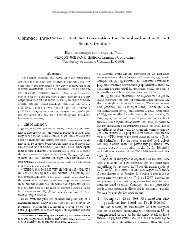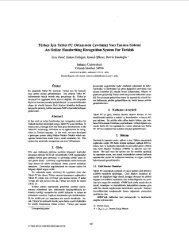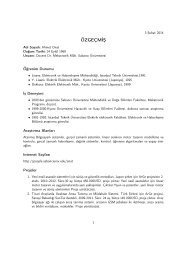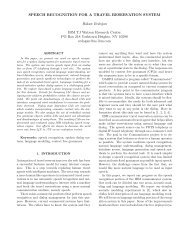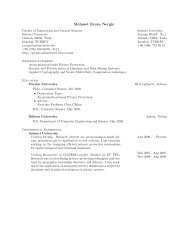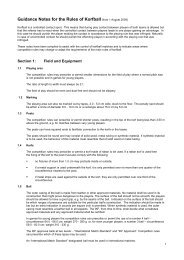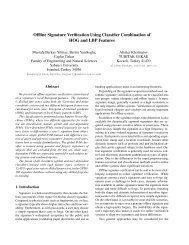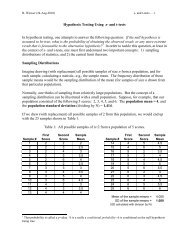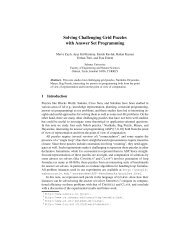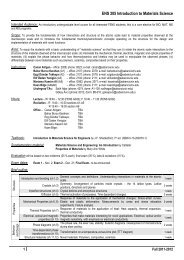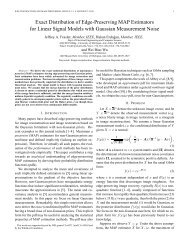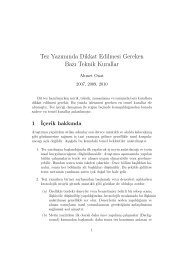PROBLEMS OF U.S. MILITARY BASES IN OKINAWA
PROBLEMS OF U.S. MILITARY BASES IN OKINAWA
PROBLEMS OF U.S. MILITARY BASES IN OKINAWA
Create successful ePaper yourself
Turn your PDF publications into a flip-book with our unique Google optimized e-Paper software.
to restore their land and make it arable again. They<br />
believed that they could retrieve their old land after<br />
the signing of a peace treaty.<br />
However, the 1951 San Francisco Peace Treaty<br />
signed between Japan and the Allies allowed the U.S.<br />
to continue its occupation and rule of Okinawa. It was<br />
followed by further requisition of people’s land on a<br />
larger scale, which was to impose more burdens and<br />
suffering on the people of Okinawa.<br />
On Iejima Island, a new round of land confiscation<br />
started in 1953. The U.S. Forces pressed the people<br />
on the island to hand over their land, encouraging them<br />
to immigrate to South America or threatening them by<br />
sending their officers to the people’s homes. Since the<br />
end of the war, Iejima farmers had worked arduously<br />
on their devastated farmland now devoid of trees on it<br />
and restored about half of their prewar production. For<br />
the farmers, further requisition of their land was too<br />
much to take.<br />
The farmers were resolved to oppose the plan. In<br />
1955, seeing that persuading the farmers would be<br />
impossible, the U.S. military decided to resort to strong<br />
measures. On the same beach where they launched the<br />
landing operation exactly 10 years before, the U.S.<br />
military unloaded 300 armed troops and vehicles, and<br />
surrounded the village. Unarmed, the villagers sat on<br />
their land, believing that “U.S. soldiers will understand<br />
our sentiment, if they are humans”. But the U.S. military<br />
turned deaf ears to the people’s plea. They bulldozed<br />
13 houses, burned them, and confiscated their<br />
land. At one house, a sick child was in bed with the<br />
measles and a mother entreated the soldiers to postpone<br />
the action. However, U.S. soldiers went into the<br />
house with their shoes on, and as soon as they loaded<br />
the family and their belongings to a truck, they demolished<br />
the house. In this way, some 63 percent of the<br />
land area of Iejima Island was requisitioned by the U.S.<br />
military.<br />
Iejima was not a peculiar example. In Oroku Village,<br />
350 U.S. soldiers, armed with machine guns and<br />
carbines, and leading 15 armored vehicles and more<br />
than 10 automatic cannons, suppressed the farmers<br />
offering resistance and confiscated their land, thrusting<br />
a “contract” at them, which said that the land shall<br />
belong to the U.S.A., including the surface, underground<br />
and air rights. Consequently, the land was taken away<br />
from the people even on a larger scale during this period<br />
than the immediate post-war period. Thus, the vast<br />
U.S. military bases as seen today were established.<br />
From the reversion to Japan of Okinawa’s<br />
administrative rights to the present<br />
In 1972, twenty-seven years after the end of WWII<br />
the administrative rights over Okinawa were returned<br />
to Japan. The prefecture’s people did not doubt at all<br />
that they could enter their own lands over the fences<br />
of the bases and get them back.<br />
The Okinawan people’s desire was again betrayed.<br />
In the past 28 years since the reversion of Okinawa,<br />
the percentage of Okinawa’s land returned to the owners<br />
has been only 15 percent of the total base area while<br />
in the mainland Japan it was 60 percent. This is a compelling<br />
evidence to show that there has been almost<br />
no change in the circumstances of the bases in Okinawa.<br />
What underlies this situation is the fact that the<br />
Japanese government assured the U.S. that Okinawa’s<br />
U.S. base functions would not decline after the reversion.<br />
In order to fulfill its promise to the U.S. , the Japanese<br />
government enacted a specific law to allow the<br />
U.S. to continue using the lands that were taken by<br />
the U.S. military by force under its occupation of Japan.<br />
As soon as the law expired, the government enacted<br />
another law. Being enacted amid frequent visits<br />
to Japan by the U.S. secretaries of state and defense,<br />
the law brought about a system to allow the U.S. to<br />
continue using the lands indefinitely in neglect of the<br />
opposition of land owners. Was Okinawa returned to<br />
Japan in any sense? Isn’t it still under the occupation<br />
of the U.S. ? This is the frank view of the prefecture’s<br />
people.<br />
II. Consequences of the U.S. Military Bases in Okinawa<br />
Why has the U.S. clung to constructing and maintaining<br />
military bases in Okinawa? Are they necessary<br />
for the defense of Japan? Absolutely, no. The U.S.<br />
recognizes Okinawa as a vital foothold for their operations<br />
in the Asia-Pacific region, which is clearly stated<br />
in many unclassified U.S. government documents.<br />
Eloquent evidence of this is the massive presence<br />
of the U.S. Marines in Okinawa, whose mission is<br />
overseas expedition. What is deployed in Okinawa is<br />
one of three U.S. Marine Divisions. Okinawa is the<br />
4



